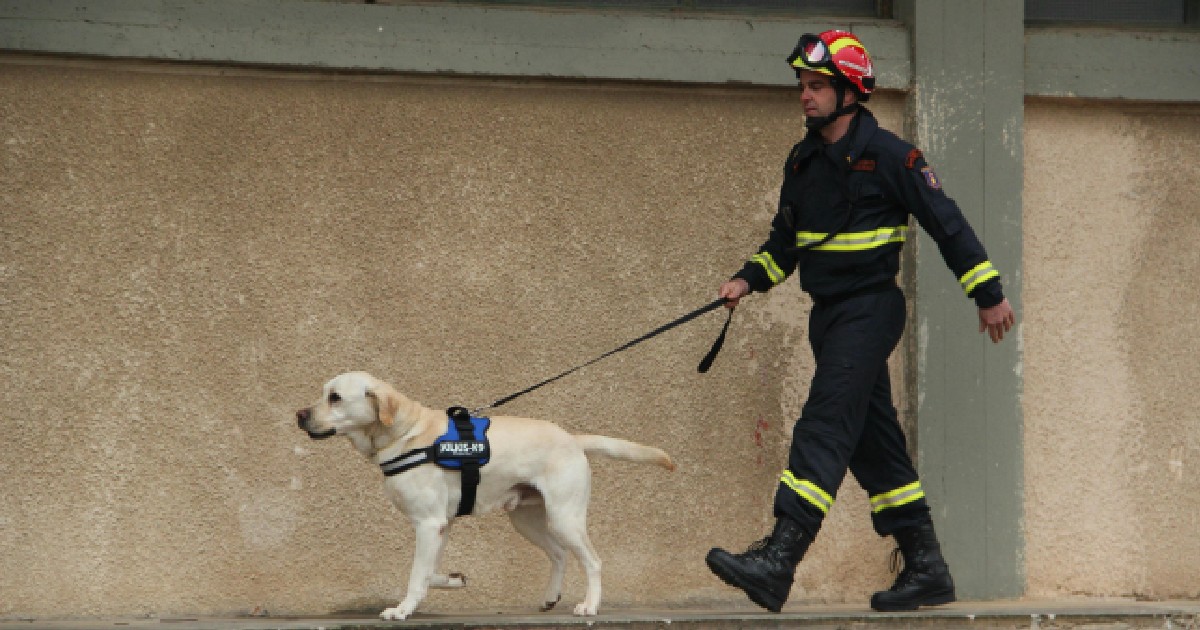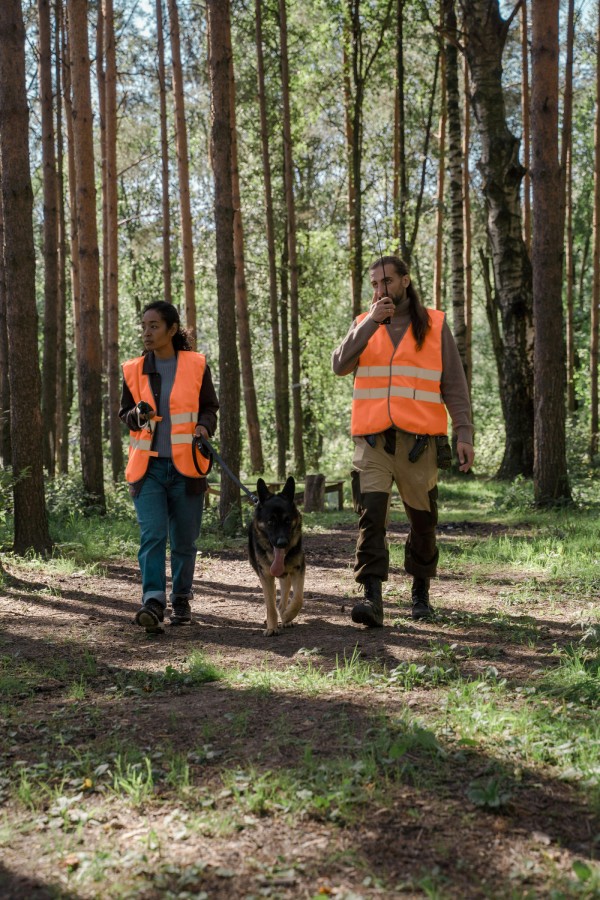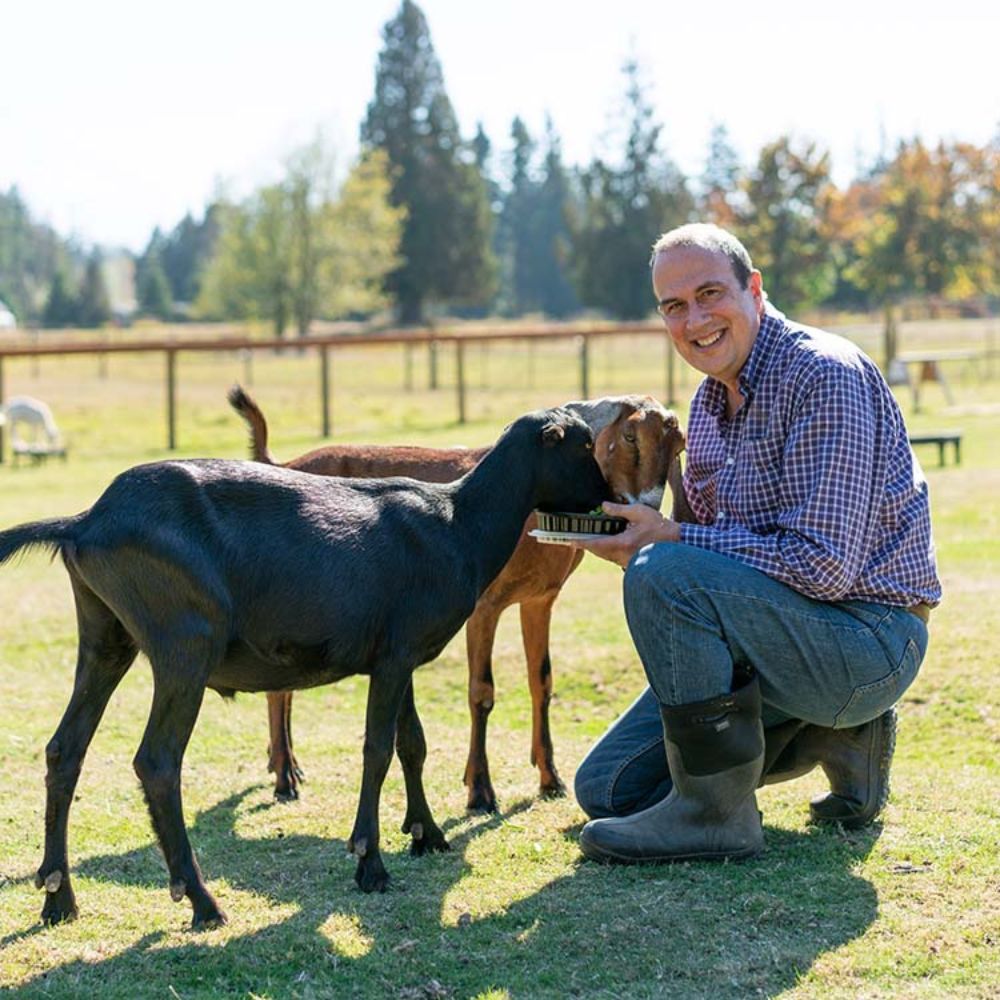
A search-and-rescue start
Sometimes trainers venture into uncharted training territory without realizing how novel or new it might be.
I have been teaching a graduate course on animal training at Western Illinois University since 1995. One of the students in my very first class was a firefighter named Bill, who also trained search and rescue dogs. Throughout the semester, he would ask great questions about the use of positive reinforcement, because most of his experience was with more traditional, correction-based training. After hearing about a technique that had been employed with dolphins or other zoo animals, frequently Bill would ask, “Would that work with search and rescue dogs?” My reply was always, “Of course it will; it works with all animals!” Although at that point I had never worked with search and rescue dogs, I was confident in my answer because I had worked with many different species and always found the techniques successful.

At that time I was oblivious to the somewhat inflexible and closed-minded approach of many traditional dog trainers. Bill was not one of the closed-minded; although he came from the traditional world, he had great faith in me as an instructor and teacher. A few months after the semester ended, Bill called and informed me that he was acquiring two new puppies destined to be search and rescue dogs. He asked if I would be willing to work with him to train these dogs, using positive reinforcement techniques! How could I refuse? I said yes, and began a new friendship and an incredible new chapter in my life.
Expanding the search (behaviors)
Bill and I spent the next two years together training his new German shepherd puppies—as well as introducing positive techniques to his experienced dog. In addition to typical searching and reporting tasks, we experimented with teaching the dogs modifier cues, cue combinations, and other conceptual skills. We taught them to discriminate between right and left, up and down, over and under, and large and small. They learned to combine these behaviors with other informational cues such as find, retrieve, and touch, accomplishments that became very useful in the field as we worked with the dogs in disaster settings.
Only after we were well into the training did I find out that incorporating conceptual skills was not typical for search and rescue dog training.
Only after we were well into the training did I find out that incorporating conceptual skills was not typical for search and rescue dog training. I had used these concepts with chimpanzees and dolphins, so we tried it with our dogs. I really had no idea that this had not been done in a search-and-rescue context previously, at least not to this extent. Because of the immense scrutiny, and life-and-death reality, within an actual search scenario, we chose not to use these concepts in the field until we were certain that the dogs would perform flawlessly in novel situations.
An amazing demonstration/Serena demonstrates success
Bill showed great faith in me as a trainer and he had unwavering confidence in his dogs. Both the faith and confidence were demonstrated one fall afternoon when we were at a disaster site where a building had collapsed. Before continuing with rescue efforts, building blueprints needed to be acquired. By the time we arrived on the site, a firefighter who had been in the building searching for the needed documents had become trapped by falling debris. He was in the middle of describing where he was, and the unlikelihood of getting a person to him easily, when his radio went dead. It was imperative to find this firefighter and get a radio to him quickly.
Bill suggested that his youngest female dog, Serena, would be up for the task. We strapped a radio to her collar and sent her in the proper direction, guiding her with verbal cues until she was out of sight, at which point her nose took over.
A few minutes later, the radio crackled and we heard the grizzled drawl of the trapped firefighter as he exclaimed, “The pooch brought me the radio!” He went on to describe his situation. Although he had found the location of the needed documents, they were on a shelf across the room and he was incapable of getting to them because he was trapped. The documents were critical in determining the safest way to continue the rescue efforts. While the fire captain and the trapped firefighter discussed the dilemma, Bill pulled me aside, brimming with excitement.
“Ken, we can get Serena to get the documents!”
“How?” I asked.
Bill explained that we have the firefighter give Serena directions to retrieve the documents. I expressed concern; I wasn’t sure we were ready to put our new training to use. I was worried about wasting time and looking foolish. I tend to be a rather conservative trainer. We had not taught Serena to accept modifier and directional cues from strangers, and it seemed unlikely that Bill could give cues over the radio. Before I could argue my concerns further, Bill told the captain that Serena could get the documents. I cringed and shrank into the background as I watched Bill speak confidently to the firefighter. Over the radio he gave cues to Serena through a man we had not yet met!
Over the radio he gave cues to Serena through a man we had not yet met!
The documents were in a binder on a bookshelf across the room. Over the radio, Bill gave the firefighter instructions to relay to Serena, step-by-step. The trapped firefighter, in turn, fed back to Bill exact details of everything Serena did. Bill would then give the firefighter additional explicit instructions. We could not see what was taking place in that room buried beneath the rubble; we could only listen to the conversations over the radio.
Bill: Point to the wall and say, “Serena, target!”
Firefighter (FF): Her nose is touching the wall!
Bill: Where are the documents in relation to where she is?
FF: On a shelf way over her head and to the right.
Bill: Tell her, “Right, Target!”
FF: She moved! But not enough.
Bill: Repeat it, “Right, Target!”
FF: She’s pretty much right under the binder.
Bill: Good, now say clearly, “Up, Target!”
FF: Damn! That dog is smart! She’s standing against the book shelf.
Bill: Is it the right shelf?
FF: No, the binder is on the next shelf up, but I think she could reach it.
Bill: OK. Call her name and say, “Serena, Come.” She should come back to you. I want you to pet her and say, “Good, girl, good, girl.” Say it twice as you rub her. Then point to the wall again and say, “Serena, Up, Target.”
FF: She went right back to where she was.
Bill: Good! Now tell her, “Up!”
FF: She moved to the next shelf! She freakin’ moved to the next shelf!
Bill: How close is she to the binder?
FF: Right in front of her.
Bill: Say, “Target!”
FF: She’s touching the book right next to the binder. The binder is on her right.
Bill: Tell her, “Right, Target!”
FF: She’s touching the darn binder.
Bill: Say, “Get it!”
FF: She pulled it halfway out and she sort of slipped down to the floor. Wait, she’s back up on the shelf; she’s pulling it all the way out! (Crash) The book’s on the floor.
Bill: Say, “Serena, Get it!”
FF: I got it! The darn dog brought me the binder!
Bill: Say, “Good girl” and pet her.
FF: Darn straight I’m saying “Good Girl!”
With Serena’s help, the firefighter exited the building safely, and we were able to complete a search of the entire building, saving 15 other trapped people.
Boundless possibilities ahead
I was amazed and pleased at Serena’s ability to take cues from a stranger and carry out tasks in such a novel environment. I marveled at Bill’s confidence, but we had put a lot of time into the training as well. What we accomplished at the rescue site was a pretty remarkable feat. Had we known that concept training with search-and-rescue dogs had never been done, we might not have tried to train those behaviors. We probably would have thought the training was a waste of time.
If we continue to make training fun, the use of positive reinforcement will continue to open new doors for our learners.
Animals are capable of amazing things, more than we often give them credit for. In the case of Serena the search-and-rescue heroine, ignorance was bliss and led us down a very rewarding path.
Experiences like this one continue to reinforce my interest in concept training and prompt me to keep exploring how much our dogs are capable of learning. I believe that if we continue to make training fun, the use of positive reinforcement will continue to open new doors for our learners.
Editor’s note: Learn more from Ken about concept training with his on-demand course Concept Training: Let’s Get Started
Note: This article was originally published on 05/14/2018 and last updated on 08/20/2024. We regularly review our content to ensure that the principles and techniques remain valuable and relevant. However, best practices continue to evolve. If you notice anything that may need updating, please feel free to contact us at editor@clickertraining.com.

